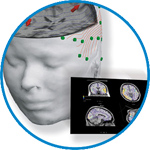- Home
- About ANT
-
Products

asa
asa is a highly flexible EEG/ERP and MEG analysis package with a variety of source reconstruction, signal analysis and MRI processing features.
.jpg)
eego mylab
The new frontier in multimodal brain research. With up to 16 kHz sampling rate, 256 EEG channels and unique software features, eego mylab gives you an unprecedented in-depth understanding of the human brain.

eego sports
eego sports offers complete freedom to collect high-density EEG data, bipolar EMG signals, and a variety of physiological sensor data, wherever and whenever required, with publish quality data in less than 15 minutes!

waveguard net
The waveguard net sets a new standard for research applications requiring high-density EEG data acquisition with quick preparation time, high flexibility, and subject comfort.

visor2
Our new and upgraded visor2 solutions integrate all the latest technologies for navigated rTMS, dual-coil navigation support, EEG-TMS recordings and pre-surgical evaluation for the highest quality in research and clinical procedures.

powerMAG ANT
The PowerMAG ANT 100 rTMS stimulator is designed for the specific needs of high-end TMS applications. Powerful high-frequency TMS as well as high precise single pulse and repetitive pulse protocols are combined in one single device.

xensor
xensor offers the solution for digitization of 3D electrode positions. xensor takes care of the whole procedure; it records, visualizes and stores positions acquired with a dedicated digitizer.

waveguard original
waveguard original is the cap solution for EEG measurements compatible with fMRI, MEG and TMS system. Use of active shielding guarantees performance in even the most demanding environments.

waveguard connect
waveguard connect EEG caps are a perfect match for hospitals and institutes aiming at reliable EEG, maximum uptime and great patient comfort! For optimal signal quality, the electrodes are made of pure, solid tin.

waveguard touch
waveguard touch is a dry electrode EEG cap. The unique Ag/AgCl coated soft polymer electrodes provide stable, research-grade EEG signals while maintaining subject comfort. The combination of these innovative dry electrodes and the industry-leading waveguard cap makes waveguard touch the best solution for dry EEG.

smartmove
smartmove allows planning of a complete TMS session ahead by defining stimulation sites based on anatomical MRI information and functional information like fMRI, PET or EEG/MEG.
Stay - References
- Support
- Events
- News
- Contact Us
You are here
Flexible Inkjet-Printed Multielectrode Arrays for Neuromuscular Cartography
Flexible Inkjet-Printed Multielectrode Arrays for Neuromuscular Cartography
Flexible Poly(3,4-ethylenedioxythiophene)-poly(styrenesulfonate) (PEDOT:PSS) conductive-polymer multielectrode arrays (MEAs) are fabricated without etching or aggressive lift-off processes, only by additive solution processes. Inkjet printing technology has several advantages, such as a customized design and a rapid realization time, adaptability to different patients and to different applications. In particular, inkjet printing technology, as additive and “contactless” technology, can be easily inserted into various technological fabrication steps on different substrates at low cost. In vivo electrochemical impedance spectroscopy measurements show the time stability of such MEAs. An equivalent circuit model is established for such fl exible cutaneous MEAs. It is shown that the charge transfer resistance remains the same, even two months after fabrication. Surface electromyography and electrocardiography measurements show that the PEDOT:PSS MEAs record electrophysiological activity signals that are comparable to those obtained with unitary Ag/AgCl commercial electrodes. Additionally, such MEAs offer parallel and simultaneous recordings on multiple locations at high surface density. It also proves its suitability to reconstruct an innervation zone map and opens new perspectives for a better control of amputee’s myoelectric prostheses. The employment of additive technologies such as inkjet printing suggests that the integration of multifunctional sensors can improve the performances of ultrafl exible brain-computer interfaces.
Read the full paper here.

 Read more
Read more.jpg)




